Looking northwest.
Looking southwest from E. Pettigrew and Pine (S. Roxboro)
(Courtesy Duke Archives)
While we think of a relatively small number of early tobacco companies in Durham these days, there were many early companies, most of which fell by the wayside, one by one, as Blackwell and Duke became the predominant players. The Lyon Tobacco Company - "Pride of Durham" was one of those early companies.
The Lyon family conducted their business in Durham, but were farmers with a plantation near Durham. In 1867, Z.I. Lyon and his son J.E. Lyon began to grow tobacco. After a year apprenticeship with John Green (predecessor of Blackwell's) the Lyons began their business, utilizing the catchphrase "Pride of Durham". They built a factory at the southwest corner of Pine St. (now South Roxboro) and East Pettigrew Street. They were joined in the business by James Cheek and Frederick Geer. An early wooden factory burned in 1884, but was replaced by the brick structure pictured above, designed by WH Linthicum.
The "Handbook of Durham" notes that the first floor contained "packing and stamping departments" while the second and third floors "are for granulating and storage." The factory produced "granulated" smoking tobacco, cigars, and "cheroots" under the brands "Pride of Durham" "Cut and Slash" and "Picked Leaf."
The Excelsior Hook and Ladder Co. (the African-American firefighters) in front of the Lyon Factory, 1880s
(Courtesy Durham Fire Department)
For unclear reasons, the Lyons sold the entire enterprise to EJ Parrish in 1887, who continued to operate the tobacco factory. However, the factory closed at some point. I surmise that this is likely to have happened in 1893, when EJ Parrish lost a great deal of money and property in the economic depression of 1893.
The building had at least one additional life as a tobacco house, though. Although the Durham market had consolidated dramatically by the early 20th century, a bold interloper, in the form of the Khedivial Tobacco Company of New York, made a play at the behemoth American Tobacco. A former Durhamite, WL Walker, leased the former Lyon Factory and began to manufacture "Walker's Durham" tobacco, while the antitrust suit was pending against Duke / American Tobacco. This evidently infuriated Duke, who threatened a lawsuit. Walker added fuel to the fire by hiring away several employees of American Tobacco. However, a fire in 1910 shuttered the operation.
I'm surmising that this left the building usable for stables.
Looking south from E. Pettigrew, 1910s
(Courtesy Duke Archives)
Man and his horse in front of the city stables, probably early 1920s
(Courtesy Duke Rare Book and Manuscript Collection - Wyatt Dixon Collection)
But perhaps little else.
Below, looking east down Pettigrew, 1920s. The west side of the old Lyon Factory is visible beyond the trees and houses. The Venable building is beyond it. As a side note, all of the housing is Hayti, and the three steeples of White Rock, Pine St. Presbyterian, and St. Joseph's.
(Courtesy Duke Archives)
Below, a view of the area, ~late 1920s. The Lyon Factory building is noted by the green dot. The pink dot is Pine St. (S. Roxboro) and the light blue dot is the Venable Warehouse.
(Courtesy Duke Archives)
The building was torn down during the late 1920s or early 1930s and replaced by the Southern Railway freight depot and office. The office building was located on the corner of Pine and E. Pettirew.
Above, the view ~1940. A long shed and office building have replaced the structures.
(Courtesy Durham County Library)
Below, a view of the office building from Pine St. (S. Roxboro) in 1966.
Looking northwest.
It appears that, although this building was appraised by the Redevelopment Authority in the 1960s, it survived into the early 1990s
Looking west, 1993.
(Courtesy Durham County Library)
Looking northwest, 1993.
(Courtesy Durham County Library)
Just before demolition, 1993
(Courtesy Robby Delius)
However, it was torn down by the county to make way for the jail. What makes this particularly dumb is that the railway building footprint appears to be taken up by some pretty unusable green space. Much like the plans for the 500 block of East Main St., these projects often afford the opportunity to clear buildings that could be saved if the city/county so desired.
Looking southwest, 2007.

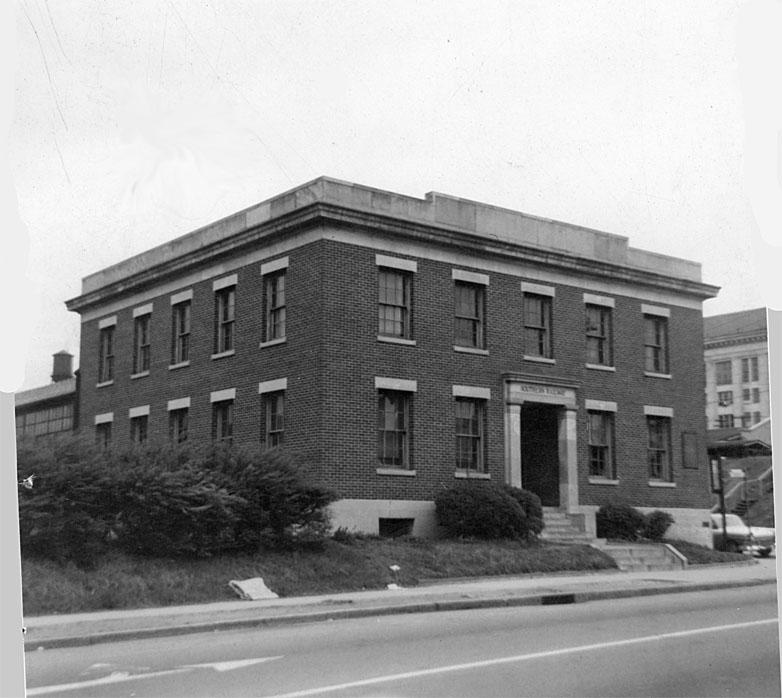
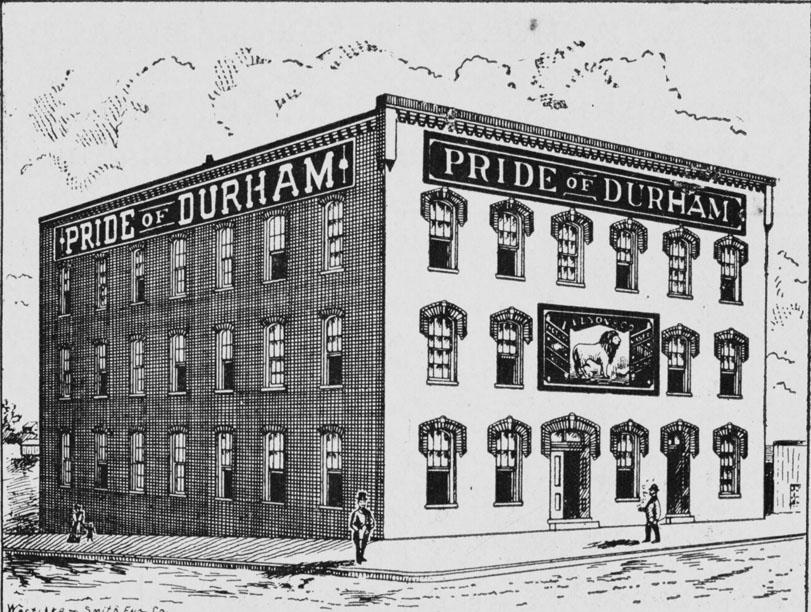
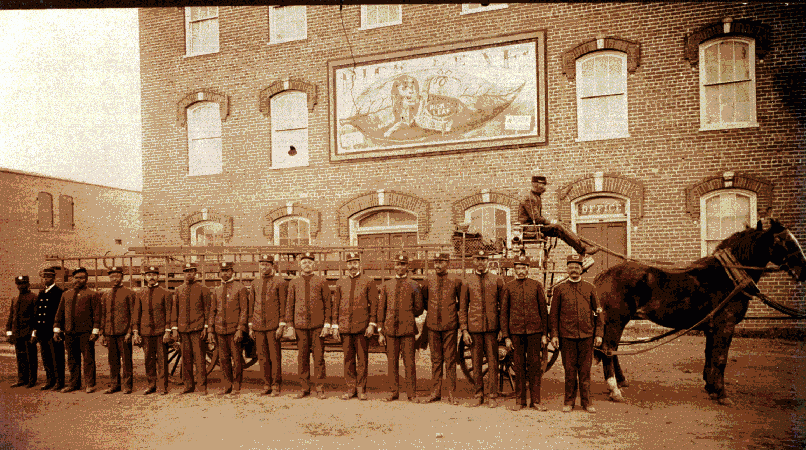
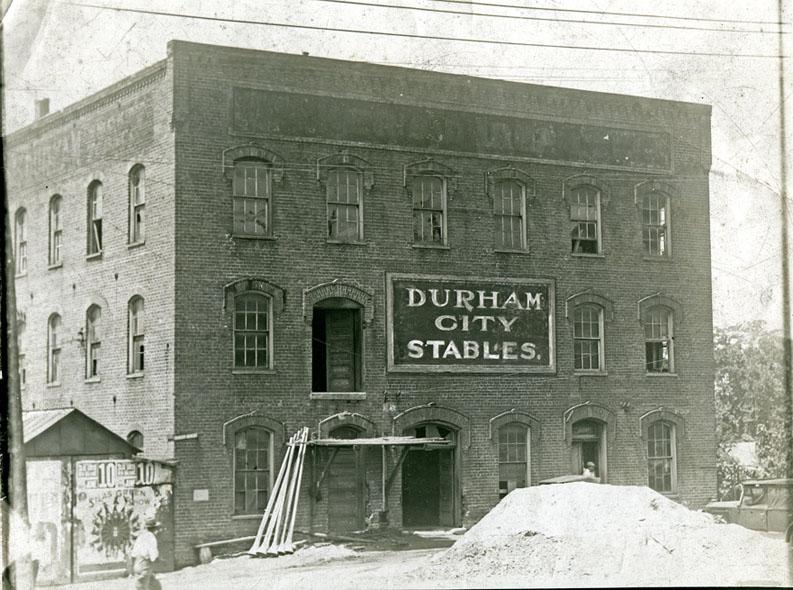
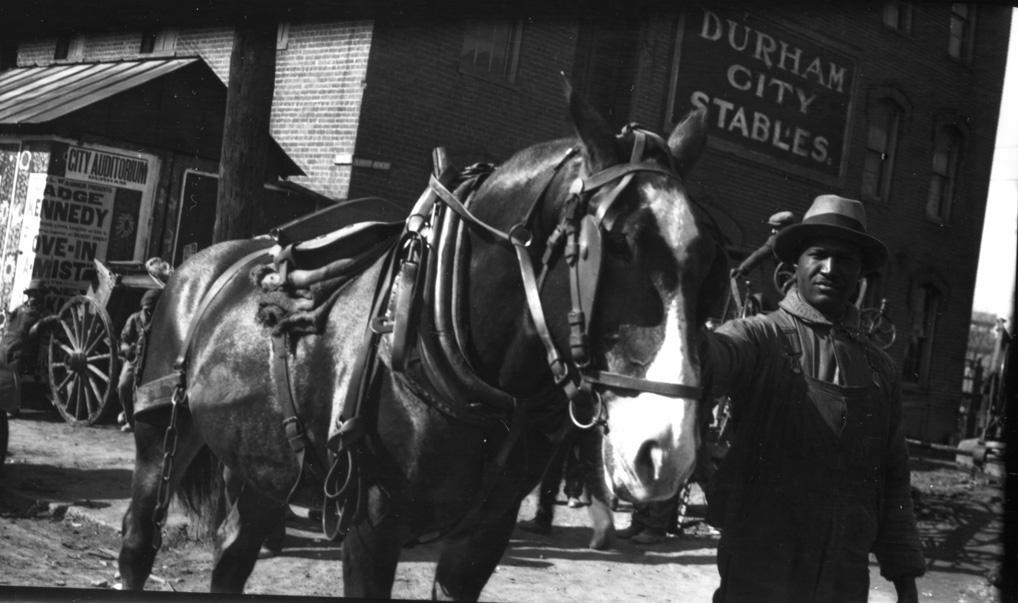
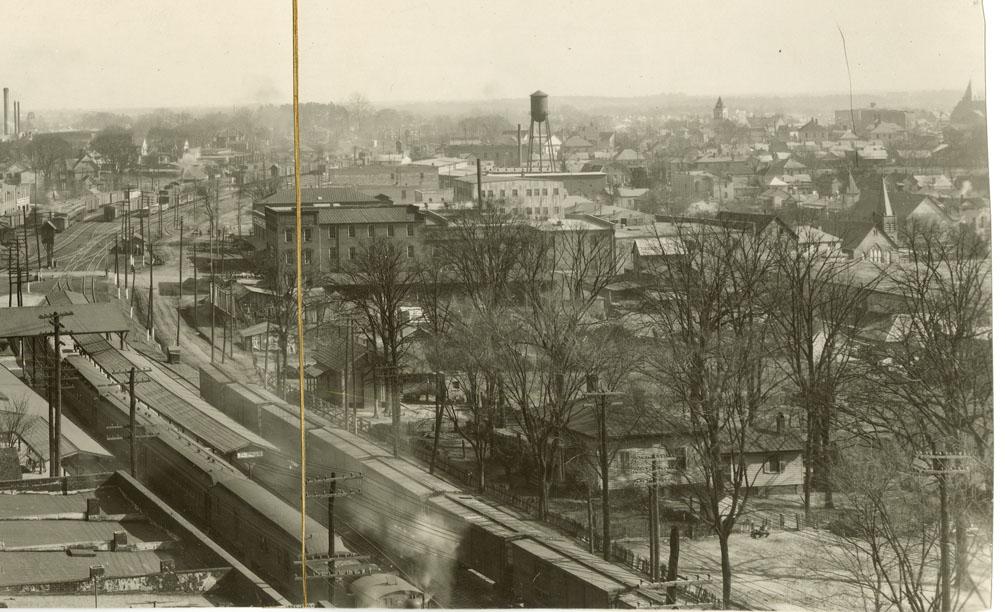
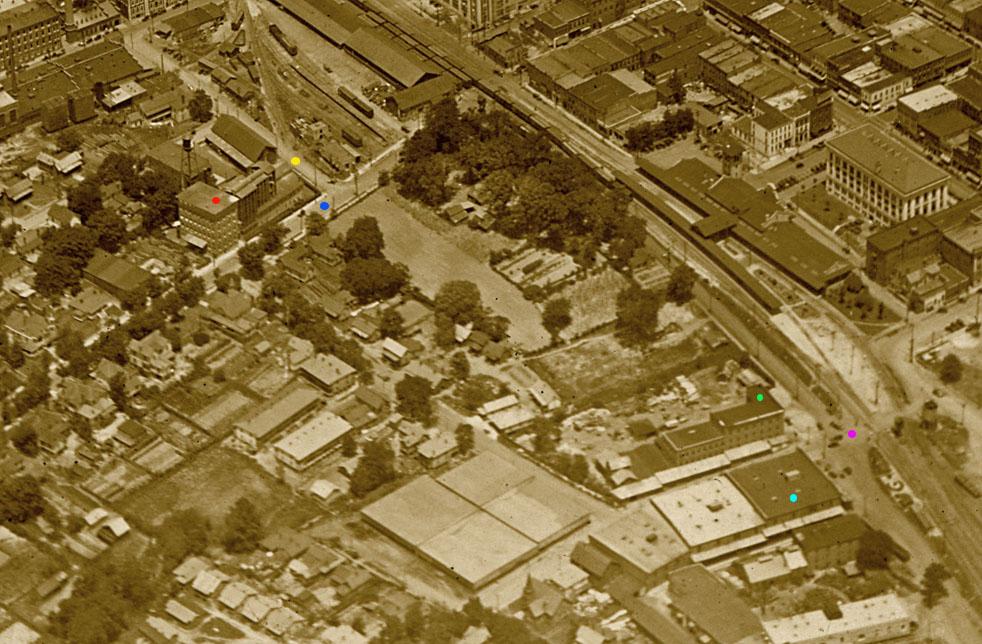
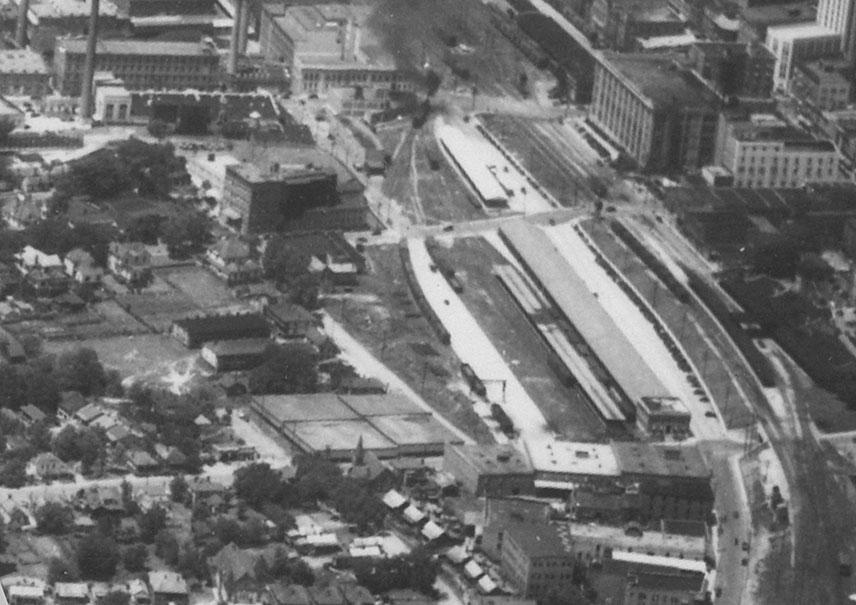
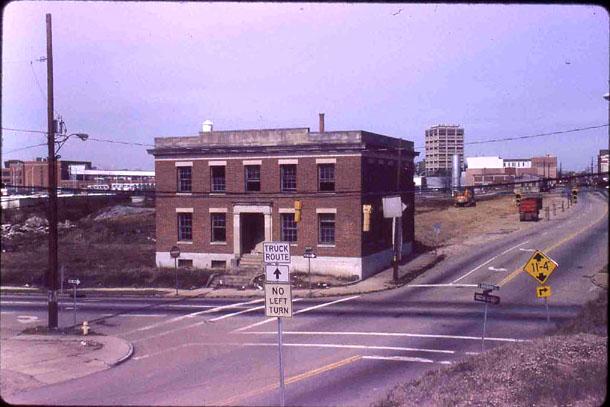
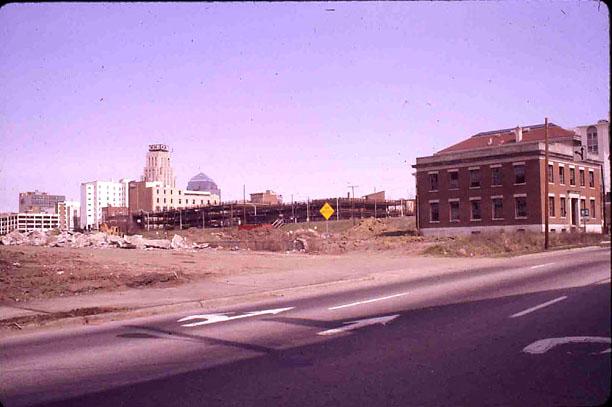
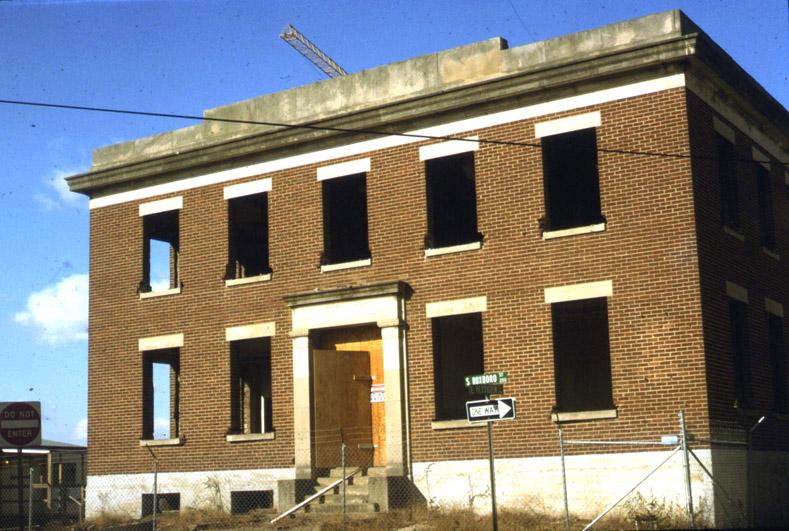
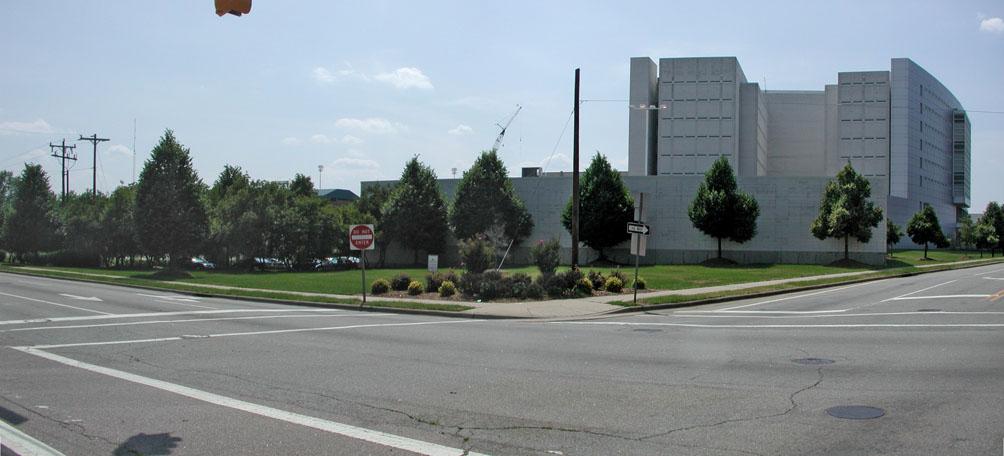
Add new comment
Log in or register to post comments.